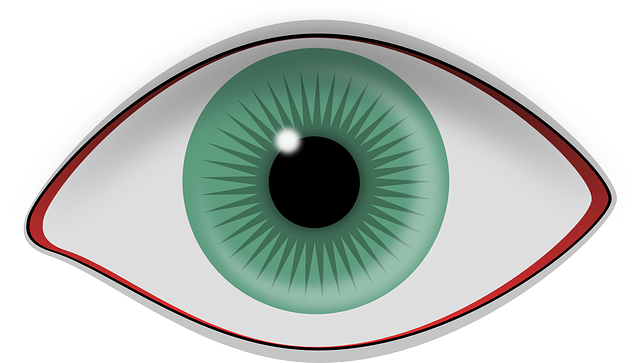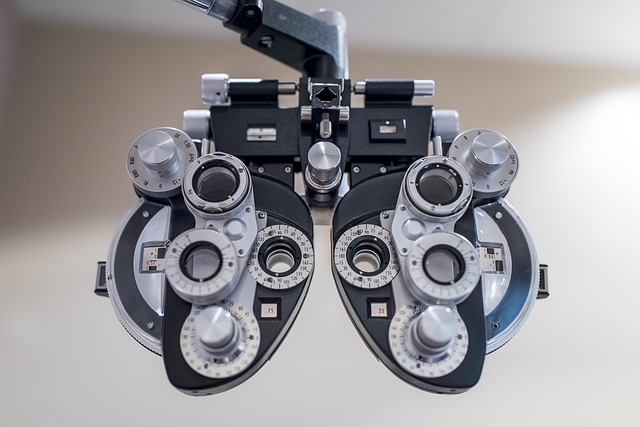Experience crystal-clear vision without straining your wallet at EYES Optometry. We make high-qualit…….
Category: kingsville eye doctors
Kingsville, Ontario is served by several dedicated eye care professionals, primarily optometrists, who provide comprehensive eye health services to the community. These clinics aim to offer a welcoming and thorough experience for patients of all ages, focusing on preventive care and maintaining optimal vision.
Kingsville Eye Doctors: A Comprehensive Overview
Introduction
Welcome to an extensive exploration of the vital healthcare sector, specifically focusing on “Kingsville Eye Doctors.” This article aims to provide a comprehensive understanding of this specialized field, its global impact, and the challenges it faces in the modern world. By delving into various aspects, from historical foundations to technological innovations, we will uncover the significance of Kingsville eye doctors in ensuring optimal vision health for individuals worldwide.
Understanding Kingsville Eye Doctors: Unveiling the Basics
Definition: Kingsville Eye Doctors (KED) is a term that encompasses the practice and expertise of medical professionals dedicated to diagnosing, treating, and preventing various eye conditions and diseases. It includes optometrists, ophthalmologists, and specialized technicians who work collaboratively to preserve and enhance visual acuity.
Core Components:
- Eye Examinations: Routine check-ups involving visual acuity tests, refraction assessments, and comprehensive eye health evaluations.
- Prescription Eyewear: Fitting and dispensing prescription glasses and contacts to correct refractive errors.
- Vision Correction Procedures: Performing surgeries and non-invasive treatments for conditions like cataracts, glaucoma, and refractive disorders.
- Eye Disease Management: Treating and managing eye conditions such as diabetic retinopathy, age-related macular degeneration (AMD), and dry eye syndrome.
- Contact Lense Fitting and Care: Educating patients on proper contact lens usage and solving associated issues.
- Low Vision Rehabilitation: Assisting individuals with low vision due to various causes in maximizing their remaining eyesight.
Historical Context: The practice of eye care has a rich history, dating back thousands of years. Ancient civilizations like the Egyptians and Greeks had basic knowledge of optics and eye conditions. However, significant advancements began in the 18th and 19th centuries with the invention of the refracting telescope and the development of early surgical techniques. Modern KED practices evolved from these foundations, incorporating technological innovations and specialized training.
Significance: Kingsville eye doctors play a pivotal role in global healthcare by:
- Preserving and enhancing visual function, enabling individuals to engage fully in daily activities and contribute to society.
- Detecting and managing eye conditions early, preventing permanent vision loss.
- Educating patients on eye health, promoting preventive measures.
- Contributing to research and the development of novel treatments for various eye disorders.
Global Impact and Trends
The influence of Kingsville eye doctors extends far beyond national borders due to globalization and the interconnectedness of societies. Here’s a global perspective:
| Region | Key Trends | Impact |
|---|---|---|
| North America | Growing emphasis on preventive care, increasing adoption of digital eye exams | Improved access to early detection, leading to better treatment outcomes |
| Europe | Rising demand for specialized eye care services, integration of telemedicine | Enhanced accessibility, particularly in rural areas, during the COVID-19 pandemic |
| Asia Pacific | Rapid urbanization driving increased eye health awareness, rise of tech-driven solutions | Growing market for advanced vision correction and contact lenses |
| Middle East & Africa | Rising investment in healthcare infrastructure, increasing prevalence of age-related eye diseases | Improved access to quality eye care services, particularly in urban centers |
| Latin America | Expanding public healthcare initiatives, increasing adoption of digital technologies | Enhanced reach of eye care services, improving overall eye health outcomes |
These trends showcase the universal need for accessible and advanced eye care, with each region presenting unique challenges and opportunities.
Economic Considerations: Market Dynamics and Investments
The economic landscape of Kingsville eye doctors is dynamic and multifaceted, influenced by various factors:
- Market Size: The global eye care market was valued at USD 235.7 billion in 2021 and is projected to grow at a CAGR of 4.7% from 2022 to 2030 (Grand View Research). This growth is attributed to increasing prevalence of eye disorders, aging populations, and rising healthcare expenditure.
- Revenue Streams: Income sources include patient fees for services, insurance reimbursements, manufacturing and sales of optical products, and research grants.
- Investment Patterns: Private equity firms and venture capitalists invest in KED startups focused on innovative technologies, contact lens e-commerce, and telemedicine solutions.
- Economic Impact: Kingsville eye doctors contribute significantly to economies by creating jobs, generating revenue, and enhancing overall productivity through improved vision health.
Technological Advancements: Shaping the Future of Eye Care
Technological innovations have revolutionized Kingsville eye care practices, leading to better patient outcomes and increased accessibility:
- Digital Imaging and Diagnostics: Advanced imaging technologies like optical coherence tomography (OCT) enable precise diagnosis and monitoring of retinal diseases.
- Contact Lenses with Smart Features: Lenses embedded with sensors monitor eye health, provide real-time data, and offer personalized treatment recommendations.
- Telemedicine and Virtual Care: Remote consultations via video conferencing improve access to specialists, especially in underserved areas.
- AI-Assisted Surgery: Artificial intelligence (AI) aids in surgical procedures, enhancing precision and outcomes. For instance, AI algorithms can analyze retinal images to detect signs of AMD or diabetic retinopathy.
- Robotic Vision Correction: Robotic-assisted surgeries like LASIK offer enhanced accuracy and faster recovery times.
- Wearable Eye Health Devices: These devices track eye movements, monitor blinking patterns, and provide feedback on eye strain and fatigue.
Policy and Regulation: Navigating the Legal Landscape
The regulatory environment for Kingsville eye doctors varies across jurisdictions but generally aims to ensure patient safety and quality care:
- Licensing and Certification: Medical professionals must obtain licenses and certifications from relevant authorities, demonstrating competence and adhering to ethical standards.
- Insurance Coverage: Policies vary internationally, affecting accessibility and patient out-of-pocket expenses. Many countries have public healthcare systems that cover a portion of eye care services.
- Data Privacy and Security: Strict regulations, such as the General Data Protection Regulation (GDPR) in Europe, govern the collection, storage, and use of patient data by KED providers.
- Pricing and Reimbursement Policies: These policies impact provider revenue and patient affordability. Negotiations between healthcare providers and insurers are crucial for ensuring fair compensation.
Challenges and Criticisms: Overcoming Obstacles
Despite its advancements, the field of Kingsville eye doctors faces several challenges:
- Accessibility Disparities: Rural and underserved communities often lack access to specialized eye care services due to limited resources and healthcare professionals.
- High Treatment Costs: Advanced procedures like LASIK or complex surgeries can be financially burdensome for patients, leading to treatment delays or forgoing necessary care.
- Shortage of Specialized Professionals: The demand for ophthalmologists and optometrists outstrips the supply in many regions, resulting in long waiting times and reduced access.
- Criticisms of Telemedicine: While telemedicine improves accessibility, it raises concerns about the quality of patient-physician interactions and potential misdiagnosis or treatment delays.
Strategies for Overcoming Challenges:
- Government Initiatives: Policies promoting healthcare infrastructure in underserved areas, including mobile clinics and telemedicine programs, can improve access.
- Public-Private Partnerships: Collaborations between healthcare providers and private entities can enhance service delivery and address cost concerns.
- Telehealth Innovations: Developing robust telehealth platforms that ensure secure, high-quality consultations can mitigate criticisms and expand reach.
- Training and Retention Programs: Incentives and specialized training programs can attract and retain specialists in underserved regions.
Case Studies: Successful Applications and Lessons Learned
Case Study 1: Rural Eye Care Initiative (RECI), USA
- Challenge: Providing comprehensive eye care to rural communities with limited access to specialists.
- Solution: RECI established a network of community health centers equipped with basic optical equipment and trained primary care providers. Telemedicine consultations were offered weekly by ophthalmologists from urban centers.
- Outcome: Improved vision health outcomes, reduced wait times, and increased patient satisfaction in rural communities. This model demonstrates the potential for collaborative approaches to address accessibility disparities.
Case Study 2: Smart Contact Lenses for Diabetic Retinopathy (DRET) Monitoring, South Korea
- Initiative: Researchers at Seoul National University developed smart contact lenses embedded with sensors to monitor glucose levels and detect early signs of diabetic retinopathy.
- Outcome: Successful clinical trials showed high accuracy in glucose detection and early retinopathy identification. This innovation highlights the potential for wearable technology to revolutionize eye health monitoring.
Future Prospects: Emerging Trends and Strategic Considerations
The future of Kingsville eye doctors holds immense promise, with several growth areas and emerging trends:
- Personalized Medicine: Advancements in genomics and AI will enable tailored treatments based on individual genetic profiles and disease progression.
- Remote Monitoring and Care: Wearable devices and remote monitoring systems will play a more significant role in managing chronic eye conditions.
- Digital Therapeutics: Virtual reality (VR) and augmented reality (AR) technologies will be utilized for visual rehabilitation and exposure therapy for phobias related to vision loss.
- Global Collaboration: International partnerships will foster knowledge sharing, research collaborations, and standardized care protocols.
- Focus on Low Vision Rehabilitation: With an aging population, there will be increased demand for low vision services, prompting innovations in assistive technologies.
Conclusion: Illuminating the Path Ahead
Kingsville eye doctors stand at a pivotal juncture, facing both challenges and opportunities. As technological advancements continue to shape the landscape, ensuring accessible and quality eye care for all becomes increasingly crucial. By addressing global disparities, embracing innovation, and navigating regulatory environments, KED professionals can make a profound impact on visual health worldwide.
FAQ Section: Addressing Common Concerns
Q: How often should I get an eye exam?
A: It is generally recommended to have a comprehensive eye exam every 1-2 years, or as advised by your optometrist. Regular check-ups are essential for early detection of eye conditions.
Q: Are contact lenses safer than glasses?
A: Both have their advantages. Contacts offer a more discreet option and can improve peripheral vision, while glasses may be more suitable for specific eye conditions and provide better protection against environmental factors.
Q: Can AI truly assist in diagnosing eye diseases?
A: Yes, AI algorithms, when trained on vast datasets, can accurately detect signs of various eye disorders, including AMD and diabetic retinopathy, with high precision.
Q: How does telemedicine impact the quality of eye care?
A: Telemedicine provides a convenient alternative for basic consultations and follow-ups but may not replace in-person visits for complex cases. High-quality video conferencing and secure platforms enhance its effectiveness.
Q: What are the latest advancements in cataract surgery?
A: Minimally invasive procedures like phacoemulsification and laser-assisted surgeries offer faster recovery times, reduced discomfort, and improved visual outcomes compared to traditional methods.
Kingsville Eye Doctors: Expert Care, Clear Vision, Every Age
In Kingsville, our renowned eye doctors are dedicated to transforming the way you view the world. Wi…….
Experience Top-Rated EYES Optometry: Save Big on Expert Eye Care Today!
Experience the difference with EYES Optometry—where clear vision becomes a reality. Our expert…….
Kingsville Eye Doctors: Save with Comprehensive Eye Exams & Top Care
At Kingsville Eye Doctors, we understand that clear vision is essential for navigating life's c…….
Unlock Clear Vision, Save Big: Find Your Local Optometrist Today!
Don't let compromised eye health or costly care stand in the way of clear vision. Local optomet…….
Unlock Crystal Clear Vision with Top-Rated EYES Optometry – Free Consultation!
Prioritize your vision with EYES Optometry. We offer expert care, comprehensive eye exams, and perso…….
Kingsville Eye Doctors: Unbeatable Savings, Cutting-Edge Vision Care
Looking for exceptional eye care in Kingsville? Premier Optometrists is your go-to destination. Our…….
Transform Your Vision: Advanced Eye Care, Unbeatable Savings!
Save with Advanced Eye Diagnostic ServicesBest Optometry: Free Comprehensive Eye CheckRevolutionize…….
Revolutionize Your Vision, Save on Exams: EYES Optometry’s Top-Rated Care
Experience crystal-clear vision without compromising your budget at EYES Optometry. We offer competi…….









